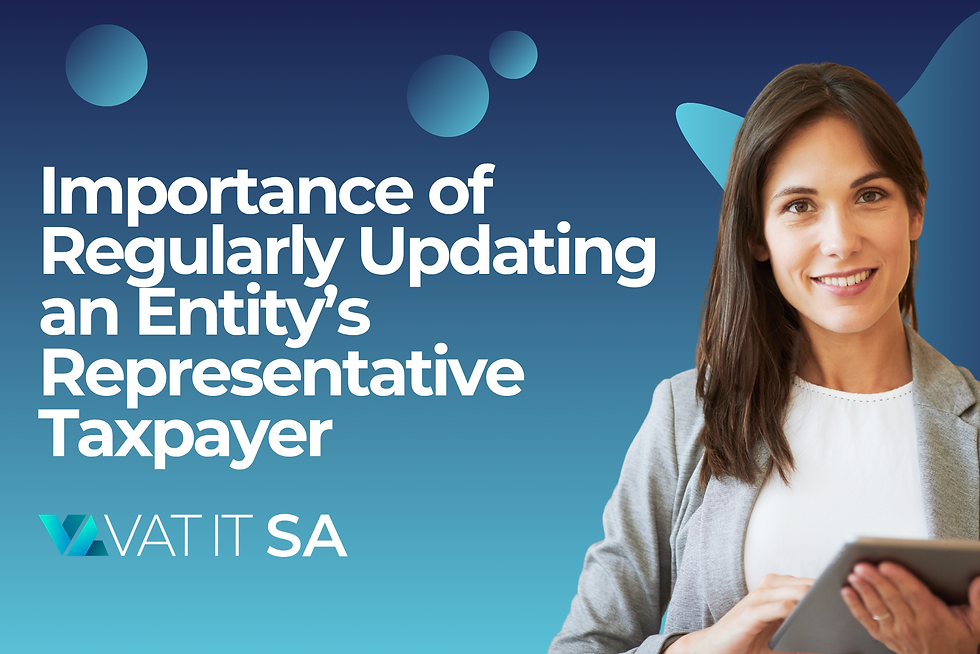The first pillar of VAT Compliance lies within the electronic set-up of your Enterprise
- Claudia Steyn

- Oct 20, 2020
- 1 min read
Updated: Jun 14, 2022
With the outbreak of COVID-19 businesses are now more than ever dependant on the digitalisation of its practices and workforce.

It is therefore vital for vendors to understand the risks that are inherent to all transactional processes and operations within their global ERP systems designs and accounting processes and to develop a coherent VAT strategy to address and manage these risks proactively.
Inaccurate VAT law interpretation and inherent ERP system weaknesses can result in material overpayments or underpayments of VAT which can lead to a financial loss, additional assessments, penalties and reputational risk. SARS is also empowered to raise retrospective assessments which means that they can go back as far as they deem necessary in certain instances.
Unless there are adequate measures in place to capture and control the end-to-end VAT accounting process, the result will be an inefficient risk management strategy which will ultimately result in a financial loss. By contrast, an enhanced tax risk management model should involve periodic testing of controls to guarantee the efficiency of the VAT processes.
Monthly VAT Compliance reviews are crucial to ensure transactions are being accounted for correctly in terms of current legislation and sample testing should be performed to ensure that documentary requirements are met. Non-compliance can lead to substantial penalties and interest.
It is also advisable for Corporates to perform an annual VAT Risk Review to optimise the efficiency with which VAT is dealt with in your financial accounting system.
Contributed by Claudia Steyn, VAT Manager, VAT IT SA.



Comments